
Square Gesu Nuovo, translated from Italian - New Jesus square (Piazza del Gesu Nuovo) - one of the most important, famous squares and one of the symbols of the historical center of Naples.
Square is a small pedestrian square located on the famous street which is not on the cards - Spaccanapoli.
Square Jesus is the result of the expansion of the city to the West, since the beginning of the 16th century under the rule of Spanish Viceroy Pedro Alvarez de Toledo.

Around the perimeter of the square is decorated by monumental historic buildings, and in the center stands a 30-metre marble obelisk of Jesus, also known as the obelisk of the Immaculate Conception (Immacolata de l Obelisque) is one of the best examples of Baroque sculpture in Naples.
The obelisk was erected on the square in the 18th century, on the place where previously was the equestrian statue dedicated to Philip V, the work of Lorenzo Vaccaro 1705, was created in order to celebrate the king of Spain's visit to Naples a few years ago. The monument did not last long, as it was destroyed in 1707, when the Austrian troops entered the city and declared the end of Spanish government in Naples.
Every year on December 8 firemen come to hold the head of the statue a wreath of flowers in honor of the Immaculate Conception.
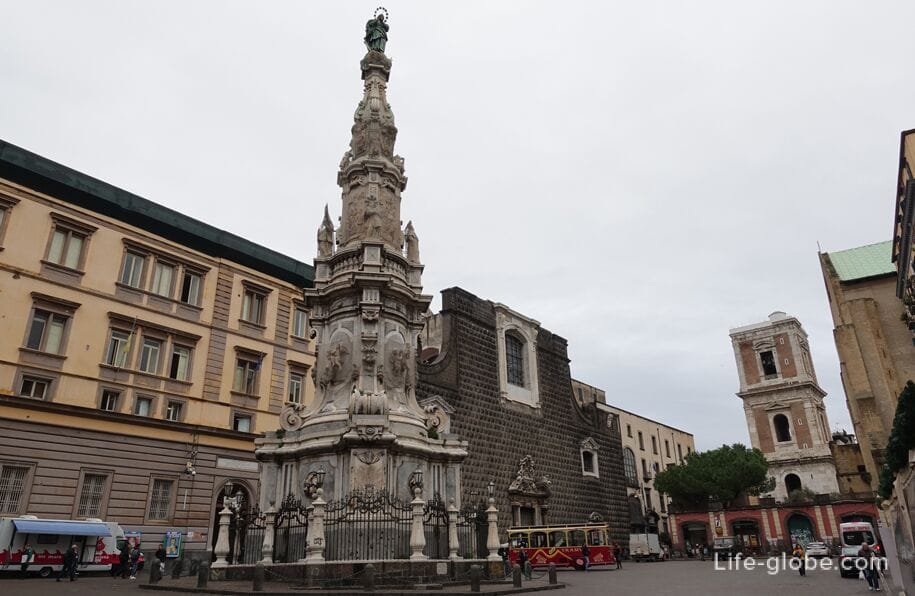
On the West side of Piazza del gesù Nuovo are late Baroque historical palaces, such as Palazzo Pandola and Palazzo Pignatelli di Monteleone (Palazzo Pignatelli di Monteleone).
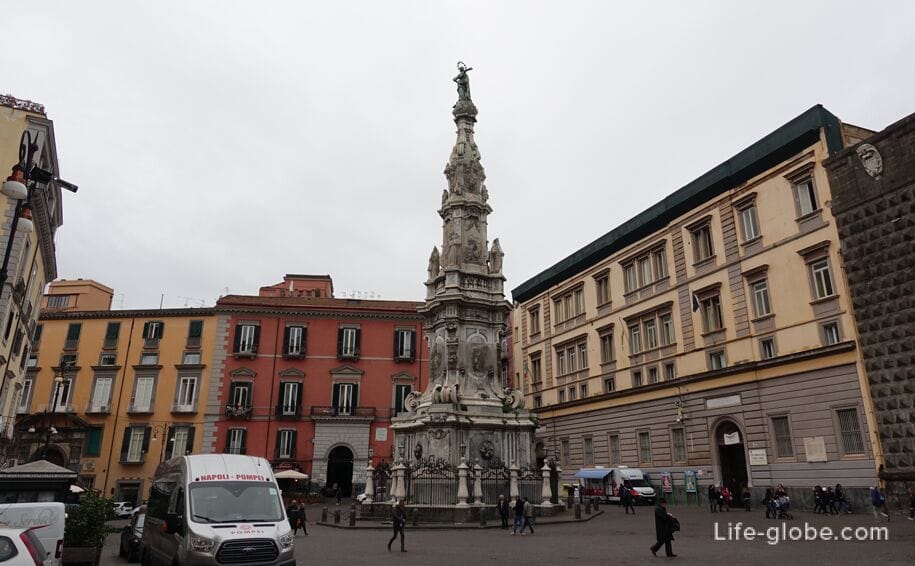
On the East side of the square is one of the most important churches in the city:
Church of gesù Nuovo (Chiesa del Gesu Nuovo), after which the area got its name;
- the Basilica and monastery of Santa Chiara (Monastero Clarisse Santachiara).
The Church of the New Jesus was originally a Palace built in 1470 for Roberto Sanseverino, Prince of Salerno. Political intrigues of a family of Sanseverino led to the fact that the property was confiscated and eventually sold in the 1580s years to the Jesuits for 45,000 ducats to construct a Church under architect Giuseppe Valeriano. The construction of the Church began in 1584. The new Church retained the unusual facade, originally built for the Palace, faced with rustic diamond lugs.
When the Jesuits were expelled from Naples in 1767, the Church passed into the possession of the Franciscan order. The Jesuits returned in 1821, but was expelled again in the period from 1806 to 1814.
Juzu Nuovo, the Church suffered serious damage during the Second world war because of the air strikes. During one attack, the bomb that fell on the ceiling of the Central nave, miraculously did not explode. In 1975 the Church was restored. Today, the bomb is on display in the room adjoining the right aisle of the Church, dedicated to St. Joseph Moscati.
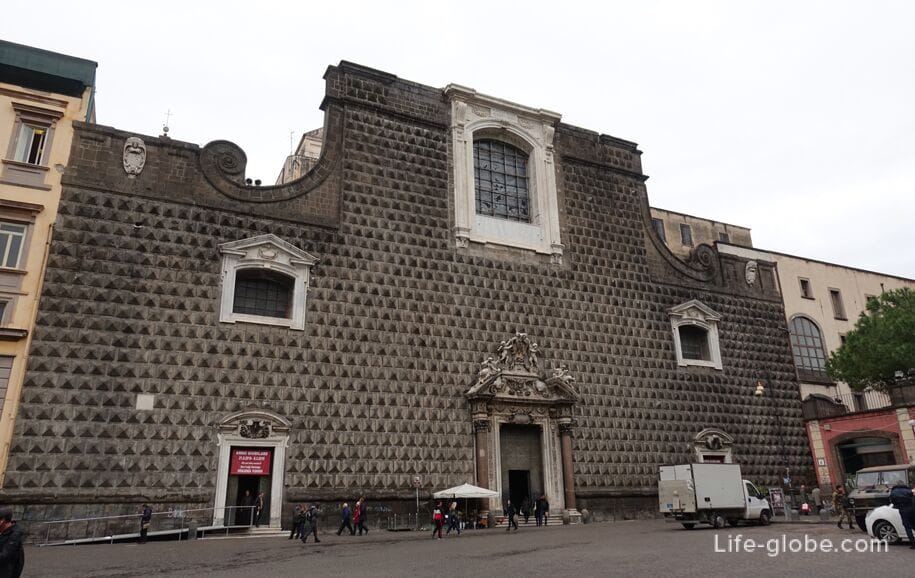
The interior of the Church is made in Baroque style, different marble decorations, bronze bas-reliefs near the altar and frescos representing biblical and saintly narratives extolling the name of Jesus.

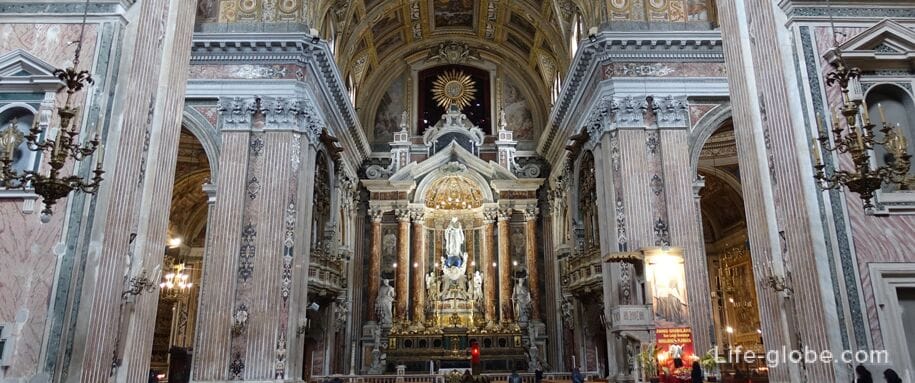
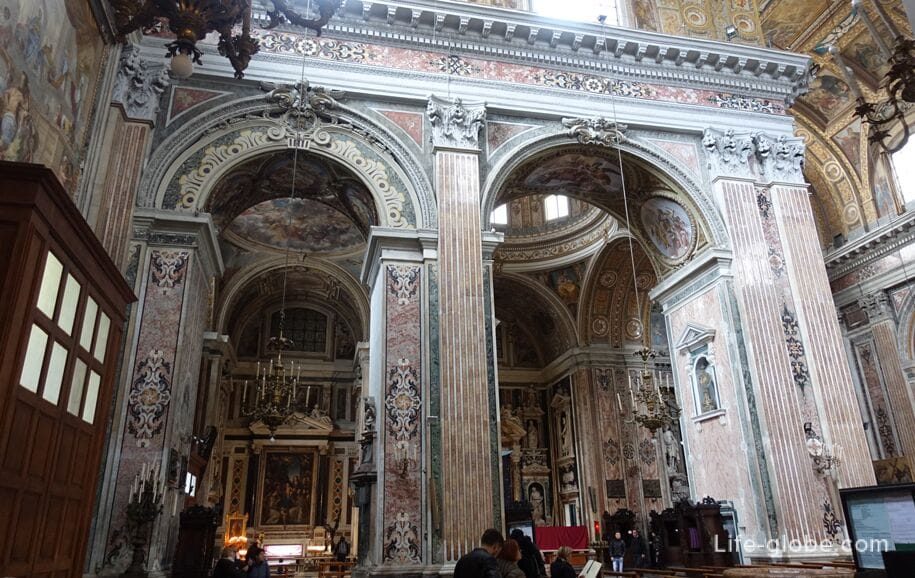
The Basilica and monastery of Santa Chiara, or Saint Clare are religious monumental historic complex, whose construction began in 1310, at the behest of king Robert of Anjou and his wife. The citadel was constructed by building two monasteries: one for the poor, the other for the Franciscan monks.
In 1742 the Church underwent changes by the architect D. A. Vaccaro. Curious coating gave the complex a Baroque appearance. 4 August 1943 the Church was almost completely destroyed by air bombardment. The complex was rebuilt and restored according to its original Gothic style in 1953. Ten years later the Church was opened for worship.

Today the complex is presented in its original Gothic forms, with a simple facade, typical Trecento .
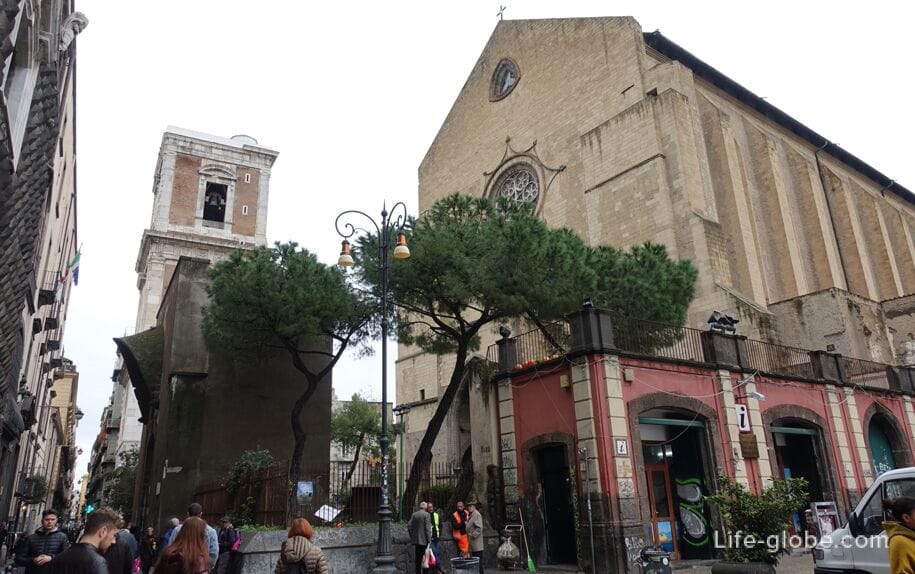
Basilica of Santa Chiara (free entry). There is a belief that the lovers obvenchatsya in this Church, will live happily ever after, never learning of separations, poverty, and mistrust. Due to this belief the Church is very popular among couples who want to solidify their love in matrimony.
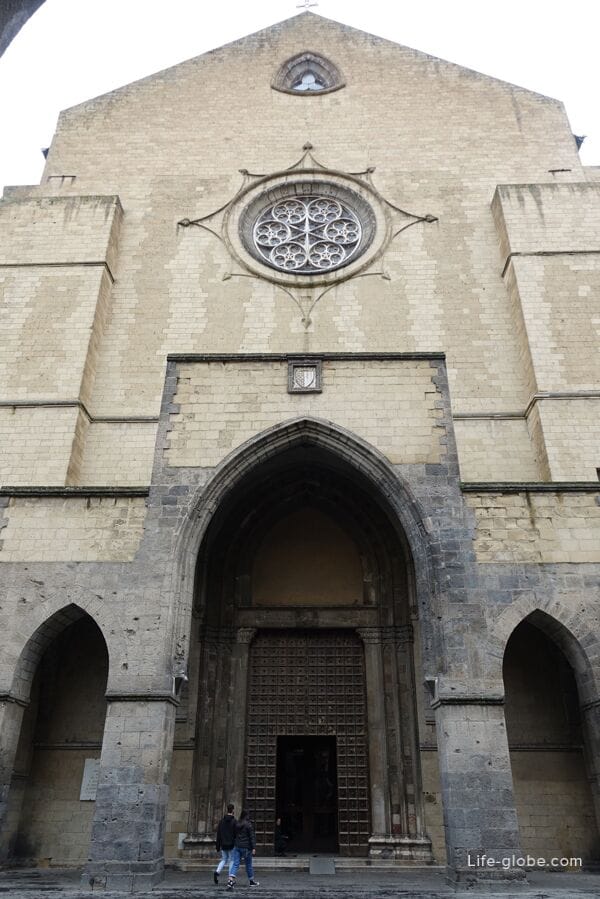
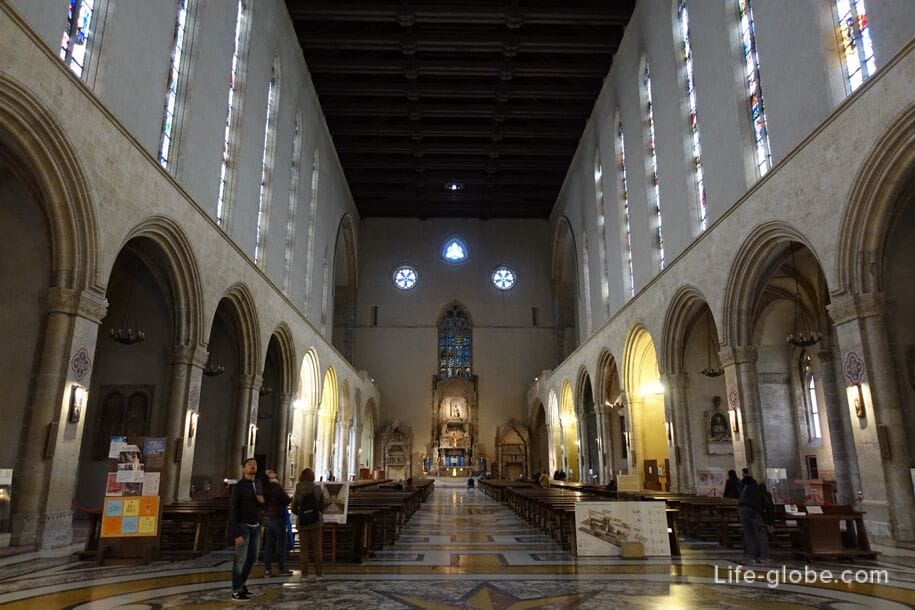
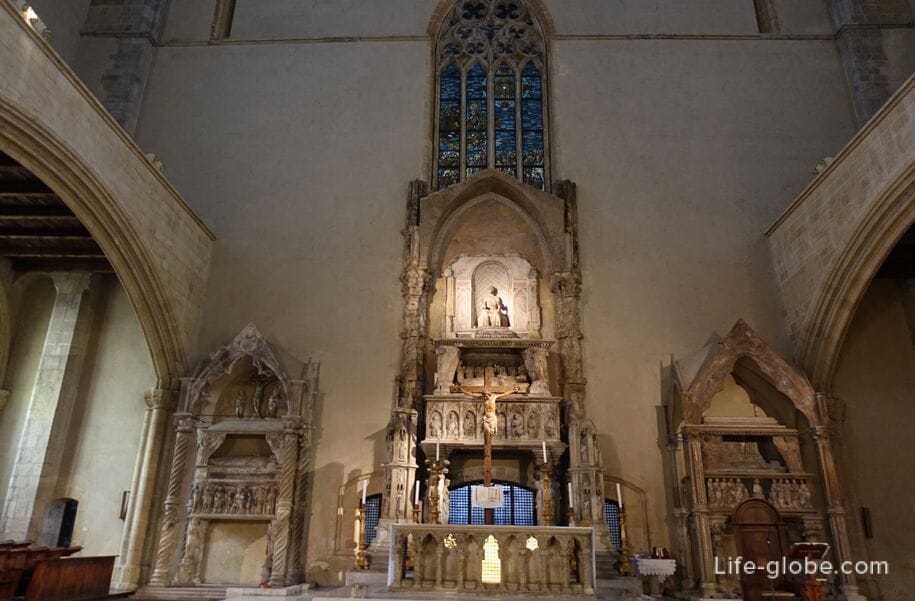
To the left of the Basilica is the highest detached belfry (bell tower), whose construction was begun in 1328 but was completed only in the Renaissance.

The monastery of Santa Chiara is notable for visits primarily a courtyard with a roofed gallery around the perimeter, two lanes, crossing the garden, he divided the last into four sectors (the original work of D. A. Vaccaro in the period from 1739 to 1742 years). Octagonal pillars covered with majolica tiles with the image of vegetation and are connected by seats, using the same techniques, depicts scenes from everyday life of that period. The walls of the four sides of the cloister completely covered with 17th-century frescoes, depicting saints, allegories and scenes from the old Testament. Inside the building there is a Museum which houses some remarkable things survived the explosion 1943 and archaeology - Roman baths, Dating from the first century ad.



The entrance to the courtyard and the Museum part of the monastery paid: full ticket 6€, concessions 4,50.
Opening hours of the monastery: mon.-PT. - 9:30 - 17:30 p.m.; sun., weekend public holidays 10:00 - 14:30 hours. Last admission 30 minutes before closing.
Hours of opening and closing of the Basilica: daily - 7:30, from 13:00 to 16:00 and 20:00 hours.
Website: monasterodisantachiara
Attention! Entrance fees and hours of operation may vary, please check before visiting.